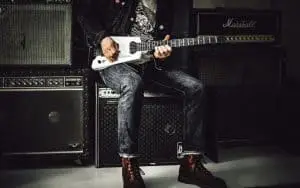Designing your first collection can be difficult. From constructing a theme to planning out your budget, the elaborate experience of creating a collection can be challenging. It can be even more overwhelming without the right tools and equipment alongside you throughout the process. Today I will be explaining what tools you will need to complete every step of the creation process for your collection.
What Are The Necessary Things For A Fashion Designer?
Many people have asked me what it takes to be a good fashion designer. As a young college student, I am still evolving into my full potential, and learning what attributes are important to have in order to be a successful designer. However, these are the skills I have found useful that I have applied in my schooling and past internships.
It is helpful to have some sewing experience when entering this field. In high school, I studied under a master tailor in my home town for two years. I spent that time learning various sewing skills ranging from small tailoring alterations to constructing my own garments. I have further pursued this skill at Michigan State by taking multiple sewing classes learning multiple skills such as pattern making and couture tailoring. Knowing these skills is important because you are able to understand how to design and construct your garment in a professional and quality way. After learning how to construct a garment and tailor a garment, you can apply this knowledge and tailor your garments to fit your clients perfectly. Beyond a simple needle and some thread, the right tools for this skill is a sewing machine ( I suggest an industrial machine such as JUKI because it is high quality and will last a long time ) Pattern paper along with pencils and pens will be necessary to draft your patterns if you need to create your own pattern. Finally, a dress form is essential to help you visualize what the garment will look like on a human body throughout the production process.
Alongside competente sewing skills, having an eye for trends will be necessary as well. Knowing what is in style in the current season you are in will help you design fashionable garments your customers will want to purchase. With this, having a good taste in color and patterns will help you design trendy garments.
I, as a student, am still trying to learn and better myself and my skills. Tailoring and sewing practices have helped me construct quality garments. Learning about various color schemes and how different colors and patterns interact with each other helps me focus on what color and patterns parallel with my theme the best. Overall, learning these skills has helped me gain a greater appreciation for this craft as a whole.
A Great Online Class: Design and Create a Clothing Collection by Domestika
If you are interested in learning more about how you can create a clothing collection, we recommend taking a look at the online class “Designing Your Clothing Collection”.
The course is currently under promotion, but you can use the discount code: T_BROWNLEES-PROMO to get an additional 10% discount on your purchase.
This online class offered by Domestika, at a very inexpensive price covers all you need to know to create your clothing collection, from developing your sketches to designing accessories and more. If you apply to the course through the link below you’ll be supporting 440 Industries, and we thank you for it!
What Are The Steps To Creating A Fashion Collection, And What Are The Tools I Will Need?
The first step to creating any garment is to conduct research. Establish your target age and gender group and determine what needs need to be met by that population. For example, if you were to want to launch a collection specifically for teenage girls/ young adults in the summer of 2021, you would design lots 90’s style garments such as corset tops, cut off “daisy duke” shorts, slip dresses, etc.. because that is what is in style at the time. Investigate the season and current trends evolving at that time, and dictate a target marketing group and how you will best serve their fashion needs. The best tools for this job are your computer and investigating what your competition is selling. Establishing a target audience and seeing what your competitors are sellings and what is in trend will help design clothing that is unique yet on trend.
After establishing your target consumer and finding a need, it is time to start designing. Choose a theme or a concept you would like to articulate in your designs. It does not need to be a powerful political statement or philosophical idea. At Michigan State, one of my assignments was to design a dress. I chose the concept of Identity initially, and it was overwhelming trying to establish a texture or color palette to portray this. I later chose a simpler theme of flowers to articulate growth. This concept was easier to portray because I had simplified my concept down to one idea. I visualized my theme through lots of pastel colors to reflect innocence and new beginnings.
When it came to creating a visual articulation of my theme, I created a mood board. A mood board is a collage of different elements that will factor into your design, such as color palettes, fabric swatches, different inspirational images, and the title of your theme. In terms of materials, two options are available; digital and physical mood boards. If you choose to create a digital mood board, I suggest downloading Adobe Photoshop or Microsoft Word. These software programs will allow you to create your collage on a black screen, and save it to your computer to either print or share with your co-workers. You can draw different imagery, color swatches ( I suggest using PANTONE color swatches because it is easier to identify a color by such a universal and popular source), and images of fabric samples from the internet or by taking the photos yourself. If you would like to create a physical proof, simply gather as many physical samples of the items listed above. 2×2” fabric samples, pantone color swatches ( which you can order online) , photographs or any other physical object(s) that will help you convey your idea, etc.. are all important. I suggest attaching all of these items to a white poster board or some sort of bulletin board. There are no advantages or disadvantages to either option ( though I believe that a digital copy is easier to share amongst your co-workers). It is up to you to determine how accessible you are to either techniciological or physical resources.
Before you begin designing a garment, discuss different budgeting needs with your co-workers. Decide the appropriate amount of money to spend on textiles, employee wages, finishes and accessories, and other aspects that factor into your collection. Take time to research and contact various manufacturers to decide which company will deliver quality materials for a fair price. This is called a Range Plan. The best way to document all of your financial endeavors is to use Microsoft Excel. If you keep your records all one one file, you can update your spendings throughout the design process and compare them to your budget goals.
After you have completed assembling your mood board and established a budget, it is time to start sketching out your garment. There are two types of sketches you will have to create, a croquis sketch and a flat sketch. A croquis sketch is what you will be designing first. This sketch is what your garment will resemble on a human body. This is also the time to articulate every accessory, finishings, fabric color and texture, and overall movement included in the garment.
The second sketch you will need to do is a flat sketch. A flat sketch is how your garment will look lying flat on a smooth surface. This is the best time to showcase any mechanical details of your garment such as seams, hems, buttons, clasps, and any other construction details. This sketch is plainer than a croquis sketch, and rather focuses on showing how the garment will look once constructed. This can be done on paper with any medium you would like ( graphite, color pencil, marker, paint,etc…) or on Adobe Photoshop. Rather than using your computer, try using a stylist and a tablet so you have better control over your movements.
Once you have created all of your designs, you will be ready to begin production with your chosen manufacturer. In order to do this, you will need to assemble a tech pack. A tech pack ( short for technical pack) is an electronic document that is composed of your flat sketch, sizing and measurements ( referred to as specs) fabric and finishing choice, buttons and zipper inclusions, the name of different fabric and accessory suppliers, a delivery date and address, and the name of your company. This information is best created digitally so that it can be easily adjusted and shared with others.
After sharing your garment with the manufacturer, you will have an app 10 day turnaround time. Once the garment is produced and shipped to your company, it will be time to advertise them. I suggest photographing models wearing your clothing and creating ads to showcase your business on various platforms. This will take a camera, and Adobe Photoshop/InDesign to create your ad.
Creating a collection can be difficult. It is challenging to navigate the different steps without feeling stressed. Before I even begin designing clothing, I feel overwhelmed even thinking I am capable of designing something quality. Remembering my sewing training, as well as keeping in mind how different colors, textures, and patterns interact with each other help me feel more confident in my work. To keep me calm and organized, the right tools help me throughout the creation process. Digital tools such as a computer with softwares such as Adobe and Microsoft installed helps me with everything from keeping track of budgeting needs to designing my garments. Old fashioned paper and pencil helps me visualize my themes and sketches in physical form. These programs and utensils have helped me with my past work. I hope that these items and skills will prepare you for your first collection.







